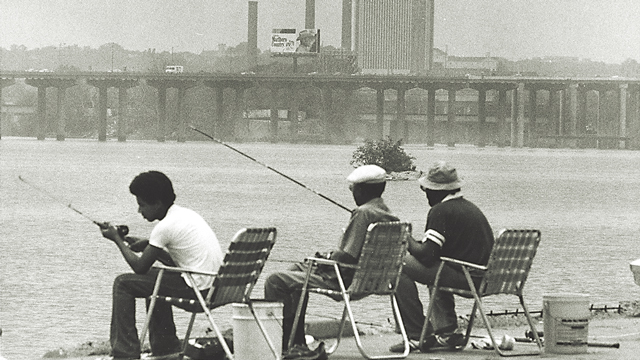One day in early 1975, an employee at the Life Sciences Products Company in Hopewell began trembling uncontrollably. The shaking didn’t stop.
Other workers at the same chemical company previously had suffered bouts of blindness, joint pain, slurred speech, tremors, labored breathing, and chest pains. But this particular employee went to a doctor who did not dismiss his symptoms, like other doctors had done for his coworkers. This doctor asked the CDC (Centers for Disease Control and Prevention) for a blood sample test, the results of which revealed an invisible environmental disaster that shook the nation and eventually compelled the federal government to claim jurisdiction on toxic waste cleanup.
Contracted by Allied Chemical Company, Life Sciences was the world’s sole manufacturer of an insecticide closely related to DDT. An unregulated, fine talcum-like powder, it was used in roach and ant traps in the United States, but most of it was shipped to Africa and South America to combat agricultural pests. Life Sciences made 3,000 to 6,000 pounds of the substance daily. Very little was known about its effects on human health.
The escalating state and federal investigations of Allied and Life Sciences estimated that some 200,000 pounds of this insecticide ended up in the surrounding environment, much of it in the James River. Scientists found measurable levels of the chemical in the blood of families and pets of Life Sciences employees and in residents who lived half a mile away from the plant. It showed up in fish in the upper Chesapeake Bay and in air samples at the Richmond Airport. Public panic ensued. The state Virginia Department of Health closed Life Sciences that July.
Governor Mills Godwin announced commercial fishing bans on the James River, up to Richmond and down to the Chesapeake Bay. The Chickahominy River suffered heavy contamination as well. These bans devastated Virginia’s fishing industry, in addition to those who relied on sport fishing to feed their families. A catch and release law went into effect for recreational fishing. With such heavy pollution, officials feared that dredging the settled chemical would just worsen the water’s contamination. Time became the recovery plan. For this, parts of the commercial fishing ban remained in effect until 1988. However, time revealed more about this insecticide, about which little was known at the time it was being produced with no oversight. Decades later, it has shown itself to be persistent in the environment – meaning that it hasn’t yet broken down. Still, no one knows how long that will take or if it will ever degrade at all. With that, the contamination remains today, though it’s largely buried under years of silt. It still shows up in fish in small amounts.
In 1980, the federal Superfund program, administered by the U.S. Environmental Protection Agency (EPA), was created to investigate and clean up sites contaminated with hazardous substances. Since then, the program has helped protect human health and the environment by managing the cleanup of the nation’s worst hazardous waste sites and responding to local and nationally significant environmental emergencies.
Photo: Bob Brown, Richmond Times-Dispatch Collection, The Valentine




